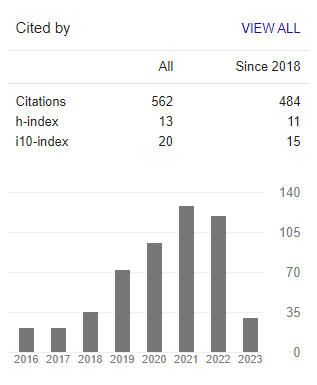KORUPSI KOMUNIKASI DALAM DIMENSI PESAN, MEDIA, KONTEKS, DAN PERILAKU: SEBUAH PROPOSISI TEORETIS UNTUK RISET
Abstract
Dalam komunikasi, hak publik atau khalayak adalah menerima pesan yang disampaikan komunikator secara utuh sesuai fakta, balk fakta normatif maupun fakta kontemplatif yang mengacu pada kaidah kebenaran berdasarkan hati nurani dan tanggung jawab moral. Korupsi komunikasi adalah perbuatan atau peristiwa dalam proses komunikasi yang mengurangi hak publik atau khalayak dalam menerima pesan secara utuh dan benar sesuai fakta, balk fakta normatif maupun fakta kontemplatif dengan memanfaatkan kekuasaan, kekuatan atau kewenangan yang dimiliki. Tulisan ini memaparkan dan membahas berbagai dimensi koruptivitas komunikasi, baik dari dimensi pesan, media, konteks dan perilaku yang kerap dijumpai ,di berbagai lingkup aktivitas komunikasi seperti komunikasi politik, komunikasi pendidikan, komunikasi pemasaran, komunikasi korporat, komunikasi media massa, bahkan dalam lingkup komunikasi antarpribadi. Untuk menggambarkan tinggirendahnya tingkat koruptivitas suatu komunikasi, maka penulis menawarkan sebuah rumus Koruptivitas komunikasi yang terdiri dari unsur-unsur N (communication Needs) plus P (power) pangkat 0 (opportunity) kurang Ar (audience right) yang dikalikan dengan Cs (conscience) plus R (moral responsibility).
Katakunci : korupsi komunikasi, koruptivitas komunikasi, pencitraan, manajemen kesan,pencucian kesan.
In communication, public or audience right is receiving the message from communicator as a whole fit the facts, both normative fact or contemplative facts which refers to the rules of truth based on conscience and moral responsibility. The corruption of communications is the act or event in the communication process that reduces the public or audience rights (to receive the message fully and correctly fit the facts, both normative and contemplative facts) by leveraging the power or authority possessed. This paper describes and discusses the various dimensions of the corruptiveness of communication, both the dimensions of message, media, context and behavior that are often encountered in various spheres of communication activities such as political communication, educational communication, marketing communications, corporate communications, mass media communication, even in the sphere of interpersonal communication. To illustrate the level of the corruptiveness of an act or event of communication, the authors offer a formula of the corruptiveness of communications consisting of the elements: N (communication needs) plus P (power) rank 0 (opportunity) minus Ar (audience rights) is multiplied by Cs (conscience) plus R (moral responsibility).
Keywords: the corruption of communications, the corruptiveness of communication,imaging, impression management, impression laundering.
Keywords
Refbacks
- There are currently no refbacks.

This work is licensed under a Creative Commons Attribution 3.0 License.
Indexed by:
Archived in:
Listed in:
INTERNATIONAL ASSOCIATION FOR MEDIA AND COMMUNICATION RESEARCH

















